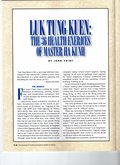
 Qi Journal 2012 (US) 秋季號
Qi Journal 2012 (US) 秋季號
美國加州傳統東方健體雜誌Qi Journal在2012年秋季號刊登文章介紹六通拳及何琼師傅。
(文章來自美國六通拳網站,感謝Evelyn Ting提供)
Author – John Voigt – email: john.voigt@comcast.net
Article appeared in Qi Journal Autumn issue 2012: The Journal of Traditional Eastern Health and Fitness, vol.22. No. 3 – www.qi-journal.com (Qi Journal launched in 1991 allowing writers to share their knowledge and experience for the advancement of others in the field of Eastern Fitness)
Luk Tung Kuen is like a sweet and delicious long-simmered and wholesome Cantonese-Style Soup that functions as a gentle medicine adjusting and benefiting the vital life energy [qi-氣]. — Master Ha Kinh
The Search
For years I have been looking for a combination of stretching, moving, breathing, and visualization techniques that would increase my mental and physical well-being.
I discovered many wonderful exercises. But until recently I kept seeing (and doing) one marvelous set of movements of which I hadn’t the slightest idea of what exactly they were, or even what they were called. And this was no rare item either: I saw people doing it from the East Coast to the West Coast of the United States. Whenever I dared ask (in English) what is this Qigong called, I was told something in what sounded like the Cantonese language. Sad to say, I had no idea what they were saying. In an attempt to find out more about it, I scoured through many books, spent many hours on my computer using various search engines, typing “qigong” in all sorts of spellings, even—against my better judgment—Chinese traditional and simplified scripts. In all this searching I found nothing. Nothing at all.
At last I found an English speaking practitioner, a stocky smiling older Chinese gentleman. They called him “Harry” and he wore a large Stetson cowboy hat. To my question he replied, “It’s from Hong Kong, so they call it the Hong Kong Hei Gong.” Noting my blank expression, he continued, “Hei—[pronounced ‘hay’]—is how qi is pronounced in Cantonese.”
The only problem is that what Harry told me wasn’t exactly correct. He had given me a variant slang term—not its “official” name. Then one morning in Oakland’s Madison Park there came a breakthrough. After having done “what-ever-its-name-was” with about a hundred people, I asked and was given its name on a slip of paper. I took the hastily scribbled Chinese characters 六通拳 and made the short trip over to San Francisco to find a Chinese book store.
There I was told that it meant “Luk Tung Kuen” or in English “Six Circulation Fist.” Eagerly I asked the knowledgeable store owner to sell me all the books and videos she had about it.
She thought for a moment, shook her head but searched the store anyway. When she returned she told me sadly, “There are no books about it—not even in Chinese. There is a DVD available in Hong Kong, but we don’t have it here.” Another reflective pause — then, “Maybe when you get home you might be able to find information on the internet.”
Back in Boston, and now with its proper Chinese name, I went to the standard digital sources and typed in Luk Tung Kuen. Wikipedia had nothing. Google Books had nothing. Google Magazines had nothing. Amazon.com did have one entry, a now out of print used VHS tape. (I immediately bought it, and later had its instructions translated from Cantonese into English.) However I did find two very important websites, one in California, the other in Hong Kong. Their basic URLs are given at the end of this article.
By now I knew that every day thousands of people do Luk Tung Kuen in this country and in China. Nevertheless no meaningful introductory explanation had been written in English about it in any book or magazine! It was then I decided to do this article.
Master Ha Kinh It all begins with a strong willed and charismatic woman named Ha Kinh — (何瓊- sometimes written as “Ho King,” and pronounced “Haw King”). She was born in Guangdong province in Southern China in 1918. Her father, (Ho Wing Siu – 何永紹), was a acupuncturist who created his own exercise regime based on Chinese martial art boxing, and on his knowledge of the body’s internal organs, joints, and energy (qi/chi) meridians.
At sixteen, Ha Kinh contracted malaria. Medicine did not work and she grew sicker. The story goes that her father taught her the exercises he had developed. She practiced them daily. Within a week, she completely recovered. In 1941 to escape an invading Japanese army, she and her parents moved to Saigon. There she married. Living conditions were difficult. Suffering from malnutrition, she became deathly ill. A Malaysian doctor recommended exercise. She remembered her father’s exercises and began to practice them. Once again she regained her health. After a series of tests, her doctor confirmed the benefits of these exercises. Together they named them Luk Tung Kuen.
By 1963 Ha Kinh relocated to Hong Kong and began teaching Luk Tung Kuen publically. The number of students grew. In 1985 she went to live with her children in Los Angeles and continued to teach LTK. Many of these students would go on to teach LTK throughout the United States, and the world. In 1986 she returned to Hong Kong to stay. To spread her teachings—which also include giving to charitable institutions—her pupils formed the Luk Tung Kuen Association, where today she is listed as “Founder and Chief [but] Never President.”
Over the years, Master Ha Kinh has been adamant about certain things. Luk Tung Kuen is to “Strengthen the Body and Serve the Society.” It is to be practiced outdoors in groups, or singularly, each morning every day of the year. It must always be presented free of charge, and open to all people regardless of age, gender, race, religion, educational, or economic background. Its purpose is to promote good health for those who practice it diligently.
Now in her 90’s, she is still healthy and active in the world of LTK.
There is a short video clip made less than a year ago that captures her dynamism. Go to scroll to “News and Events,” then to “2011: Ha Kinh Visit December.”
What Are They Saying?
When you see or practice LTK in a park—or in front of your computer—you will hear a constant flow of spoken words. First you should know each of the moves is usually being counted. Also power words are occasionally given—especially with the more intense punching, kicking, and yoga-like super stretches. So you will hear words sounding something like “Chuet Lick” meaning something like “Strength” or “Force” and implying “Throw it out with Power!” Similarly there is “Boc-Taw-Lick” meaning something like “Arm-Head-Shoulder Strength,” or “Gang-Lick” meaning “neck strength.” Then there is the opposite, “Sui-dai” meaning “Relax.” None of the words used in LTK have an overt Political, Religious, or Spiritual meaning.
Movements 1 to 36
What follows is a summary, offered only as a short introduction to Luk Tung Kuen. For instructions to properly learn the exercises refer below to “Sources for Further Information.”
(Please see Step by Step section on luktungkuen.org) The entire program lasts for approximately forty minutes. It is best done outdoors, in groups, early every morning. The exercises should be done in the order given. No other exercises should follow them. However if a person has difficulty doing any exercise, they should move as gently and comfortably as they can—or simply disregard that particular exercise.
FINAL THOUGHTS
The majority of the information in this article comes from various Luk Tung Kuen groups and their web sites, from a privately circulated handbook, and from several personal conversations. A special thank you goes to Chuchu Wen for her translations. However any mistakes or misinformation is the fault of the author alone.
There are hundreds of places worldwide where you can find Luk Tung Kuen every morning. Consult http://www.luktungkuen.org/ for addresses. You might even simply travel to the closest Chinatown early some morning, as I did, and find a park with a group of people doing LTK. But don’t call it a “qigong.” Master Ha Kinh says that it is not because it never uses any qigong style abdominal or reverse breathing.
There is an overriding social component to LTK which should not be overlooked. The people I practice it with are most often middle-aged and elderly women. When we finish the exercises they invite me to join them at a close-by fast food restaurant. Coffee is ordered for all, and happily they converse in Cantonese (I smile) and they share delicious home baked goodies. Actually, like mischievous schoolgirls, they sometimes even talk between themselves when doing the LTK forms. For them LTK is about Community—not isolation. I believe that is the source of much of LTK’s health granting qualities. And they, and I as well, certainly enjoy doing it.
—————————————
About the author, John Voigt Moving Meditation for Body & Mind
Presented by John Voigt
John studied with Grandmasters Mantak Chia (Universal Healing Tao) and Lin Housheng – 林厚省 creator of Taiji-Qigong Shibashi (太极气功十八式). Also with Michael Winn – (Healing Tao USA), Daisy Lee and Francesco Garripoli (PBS special Qigong: Ancient Chinese Healing). The lineage of his first teacher, as well as that of his current teacher may be traced back to the Temple of the Yellow Dragon north of Hong Kong, famous for its medical/healing/herbal knowledge. He lives in the Boston area.
– John Voigt
PDF Version Download / PDF 版本下載
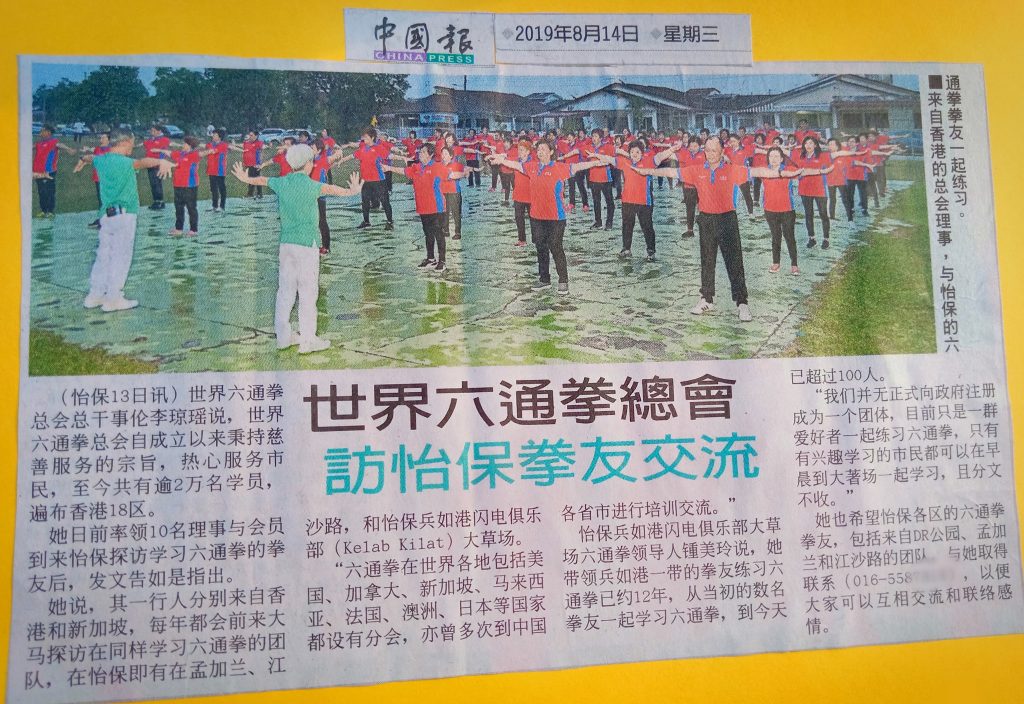
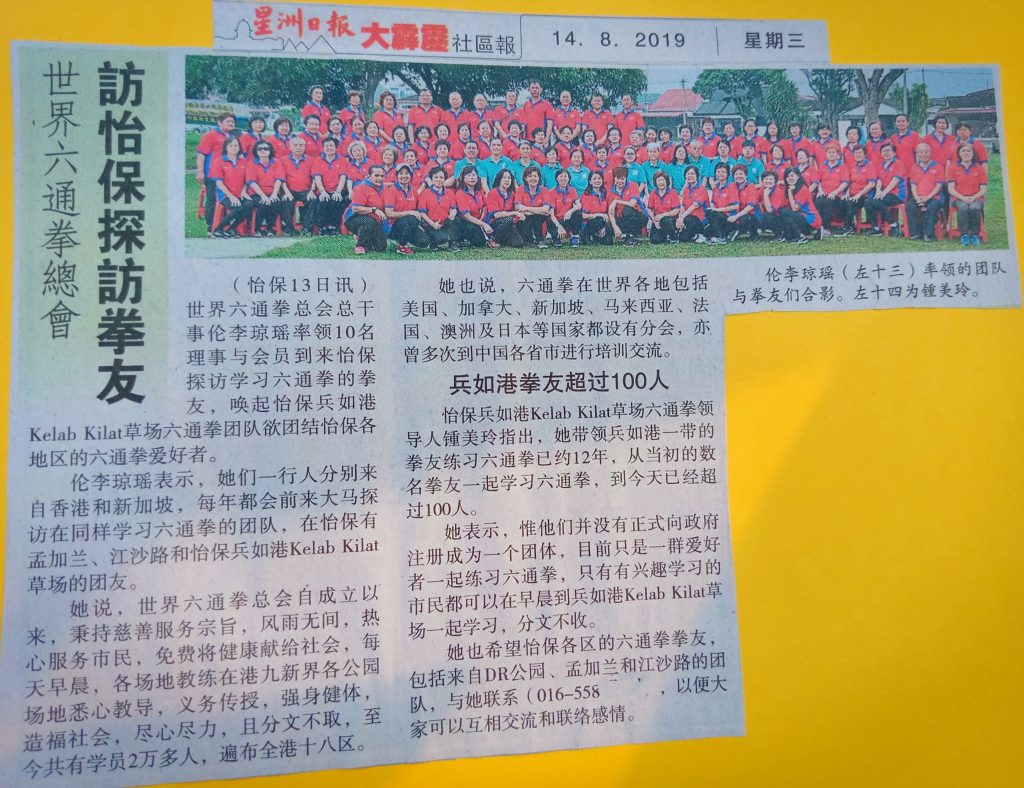
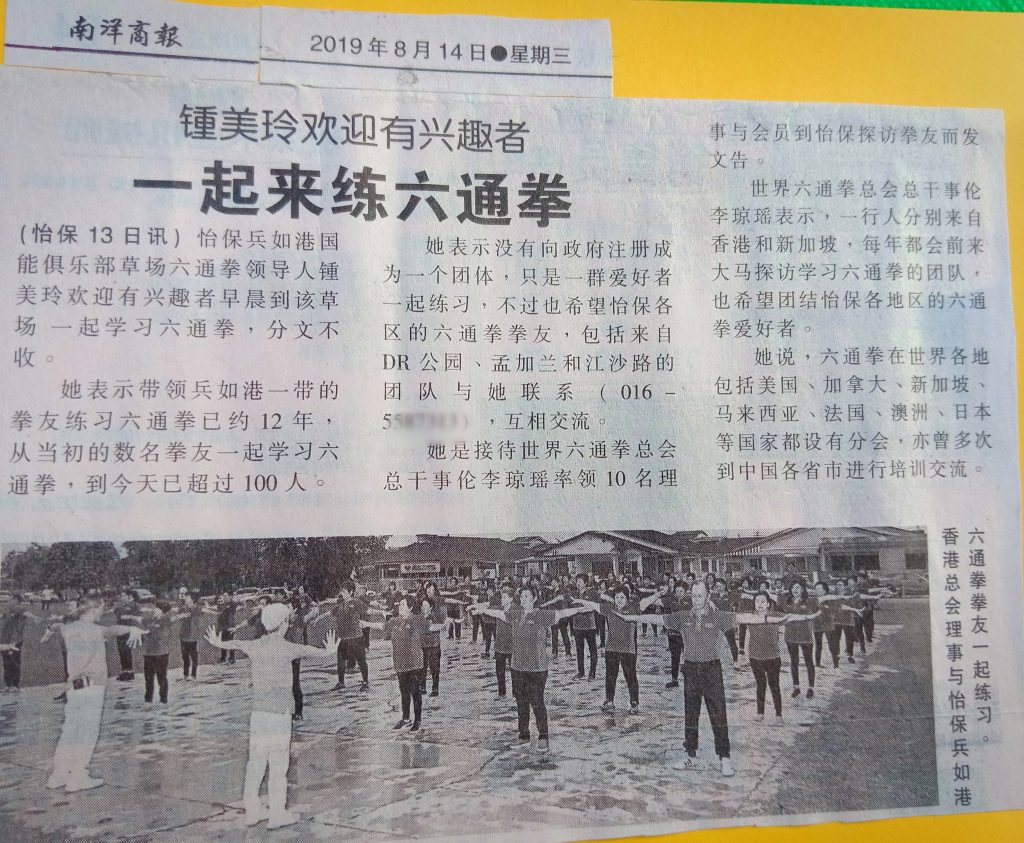
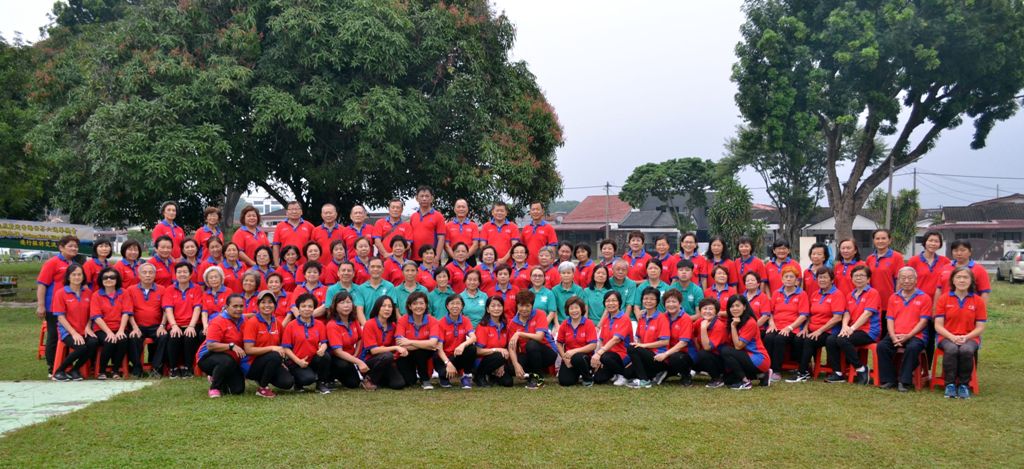
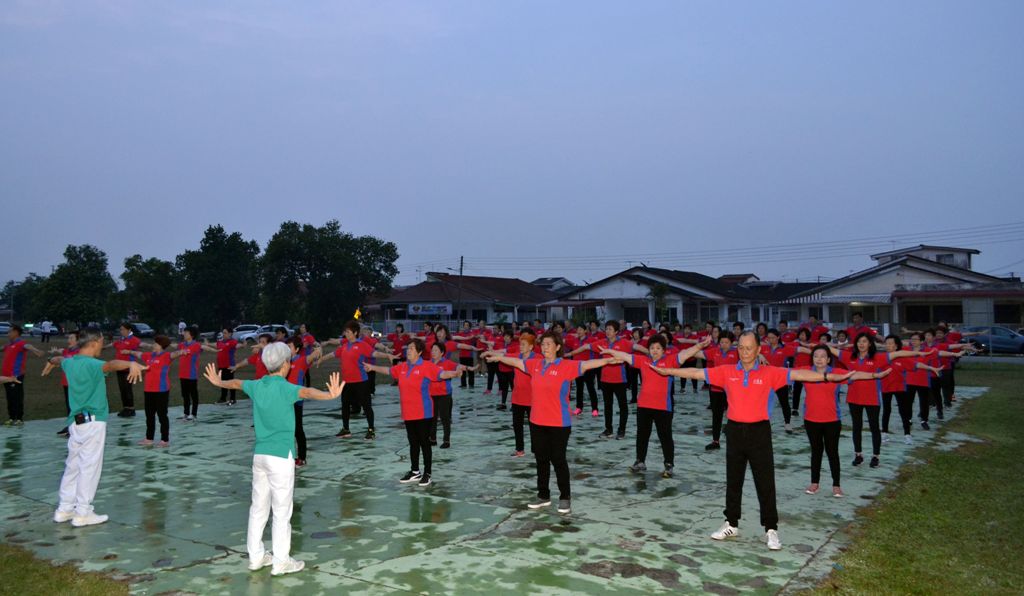


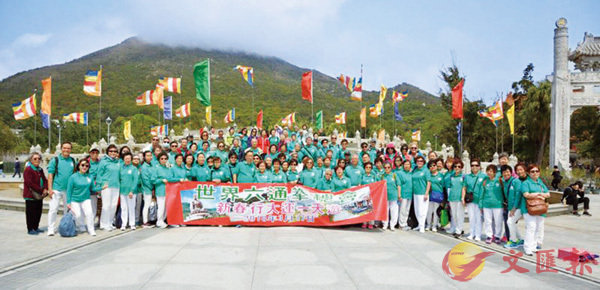



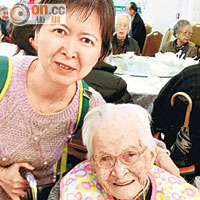
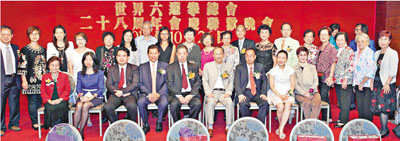 香港文匯報訊(記者 子京)世界六通拳總會日前假金鐘名都酒樓隆重舉行28周年會慶聯歡晚會,出席嘉賓包括立法會主席曾鈺成等,逾千人歡聚同慶。
香港文匯報訊(記者 子京)世界六通拳總會日前假金鐘名都酒樓隆重舉行28周年會慶聯歡晚會,出席嘉賓包括立法會主席曾鈺成等,逾千人歡聚同慶。 本會總幹事兼教練倫李琼瑤師姐在香港電台節目《運動人生》講解六通拳。
本會總幹事兼教練倫李琼瑤師姐在香港電台節目《運動人生》講解六通拳。
